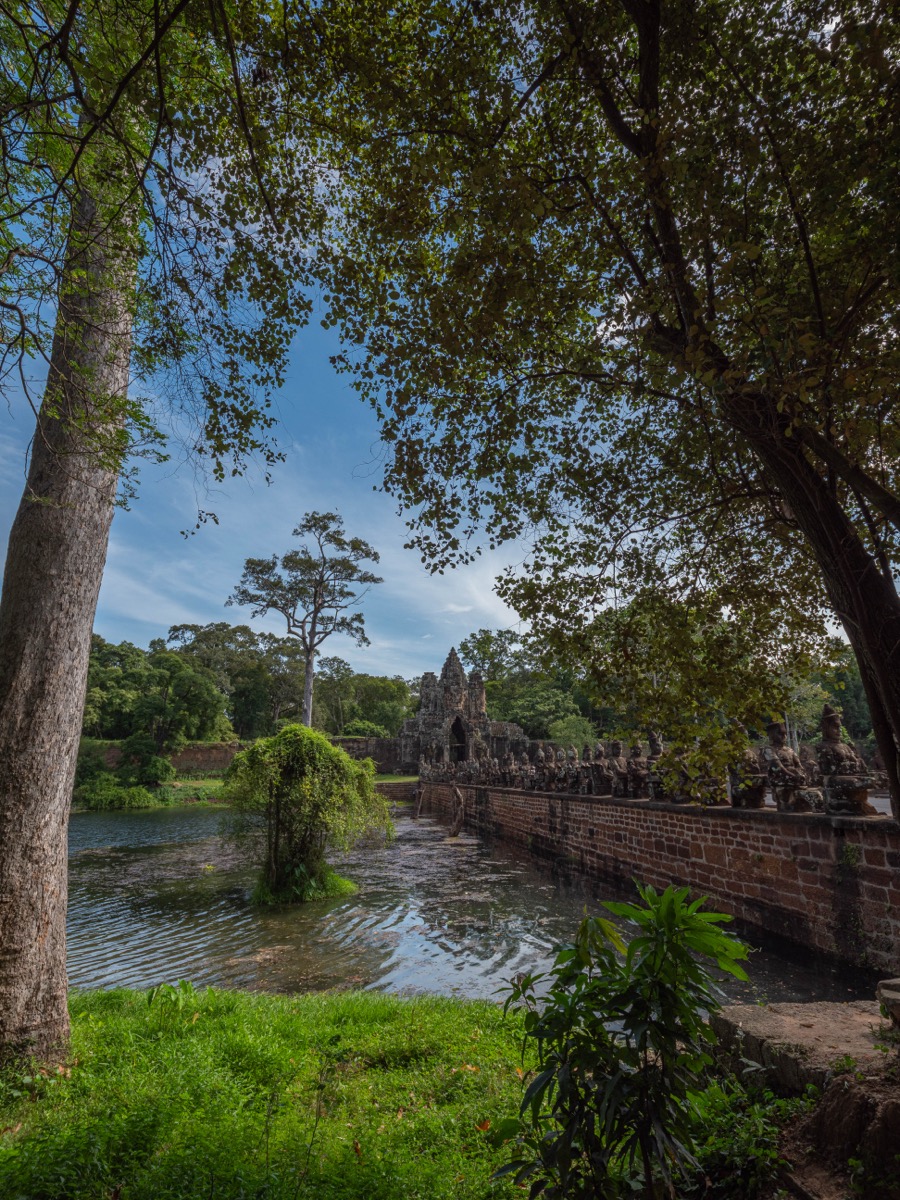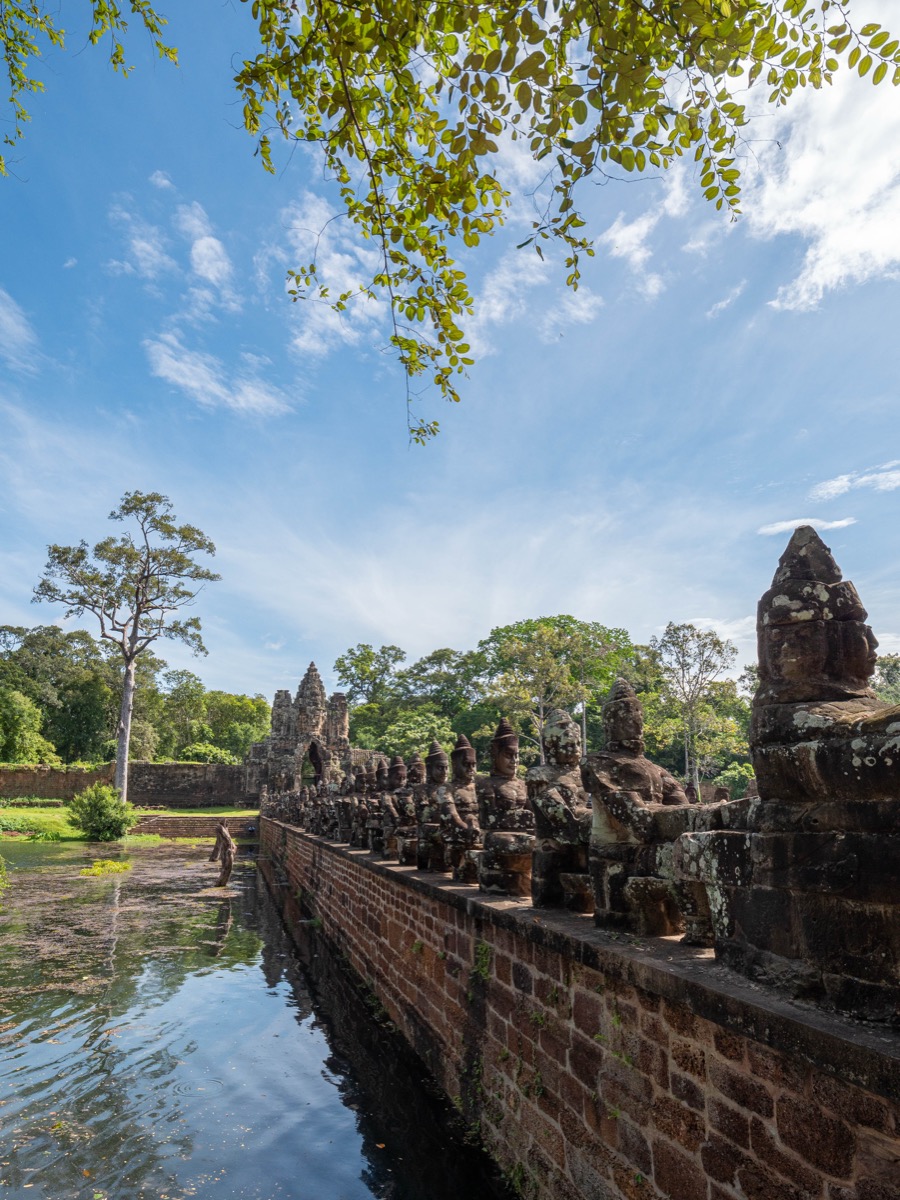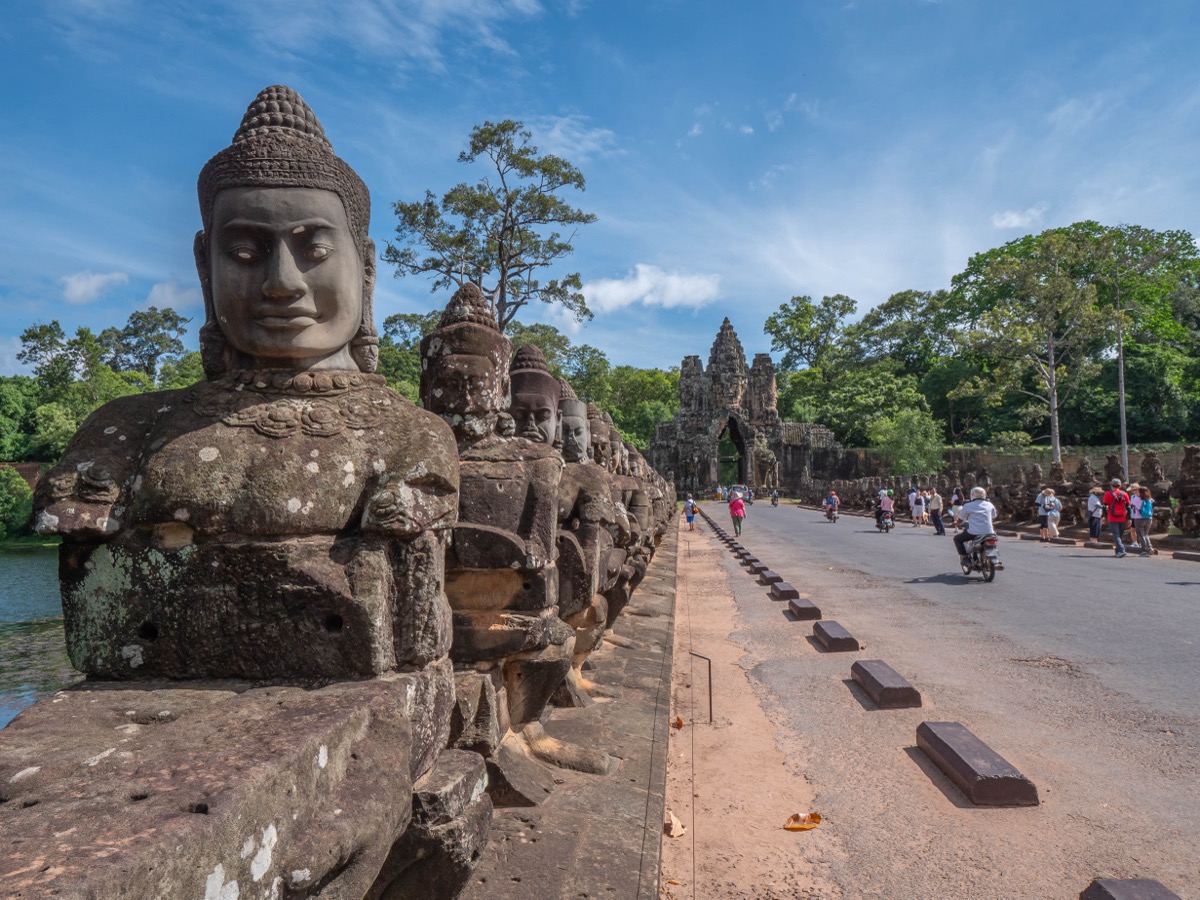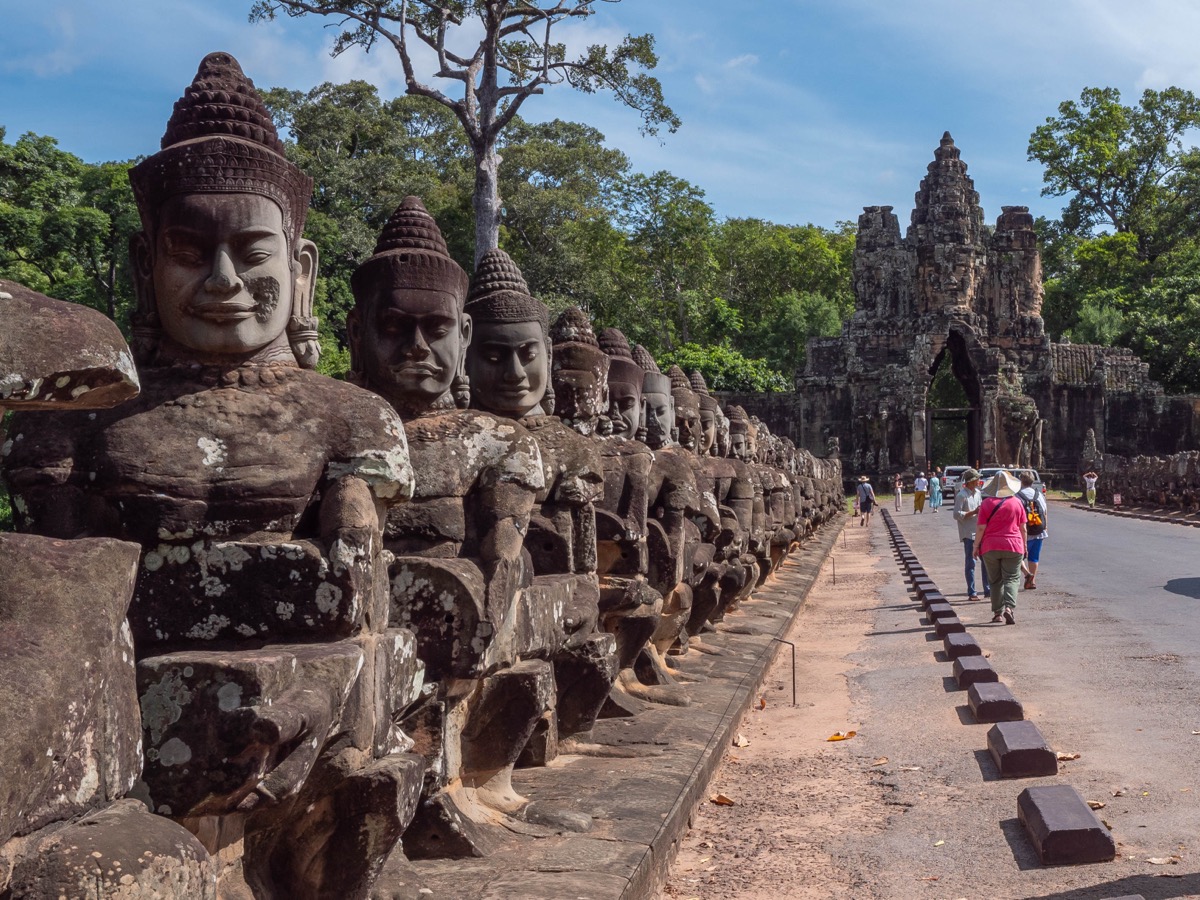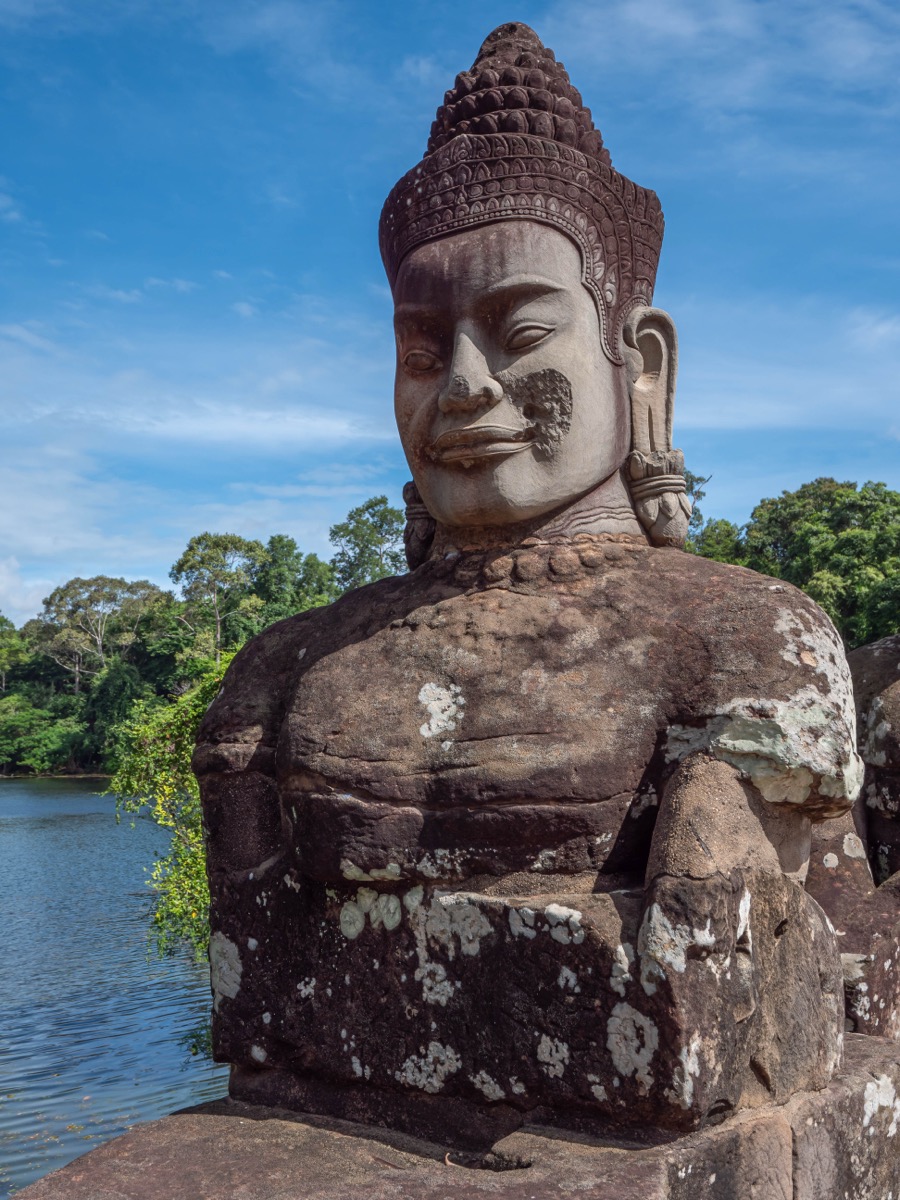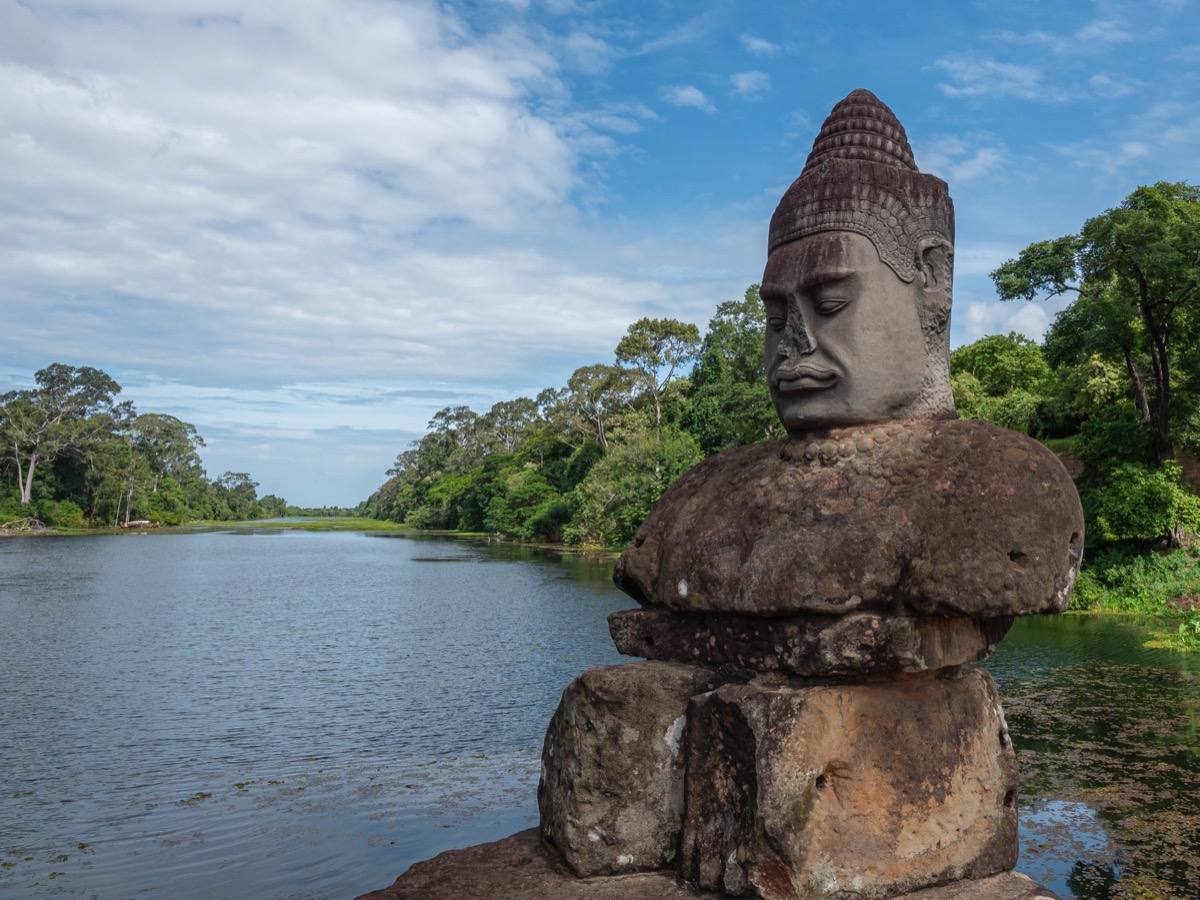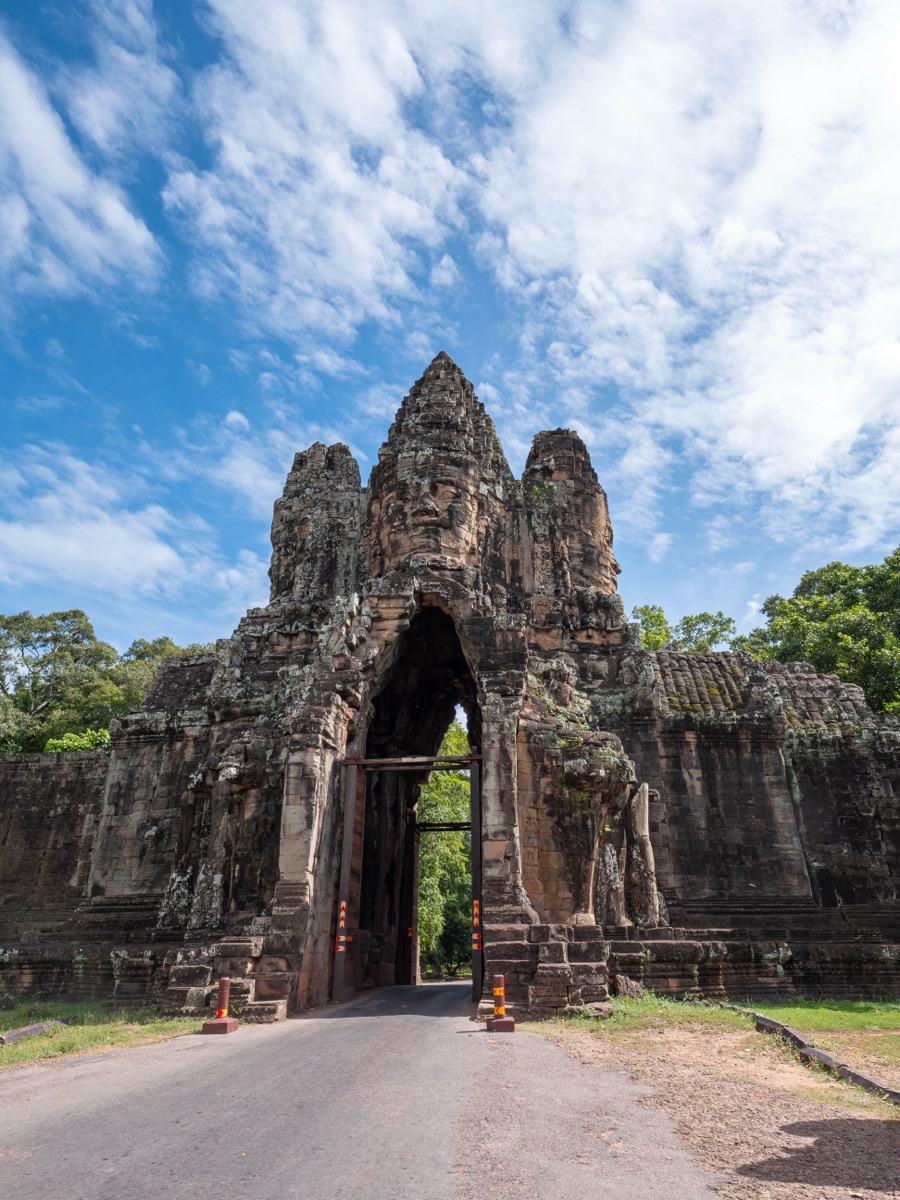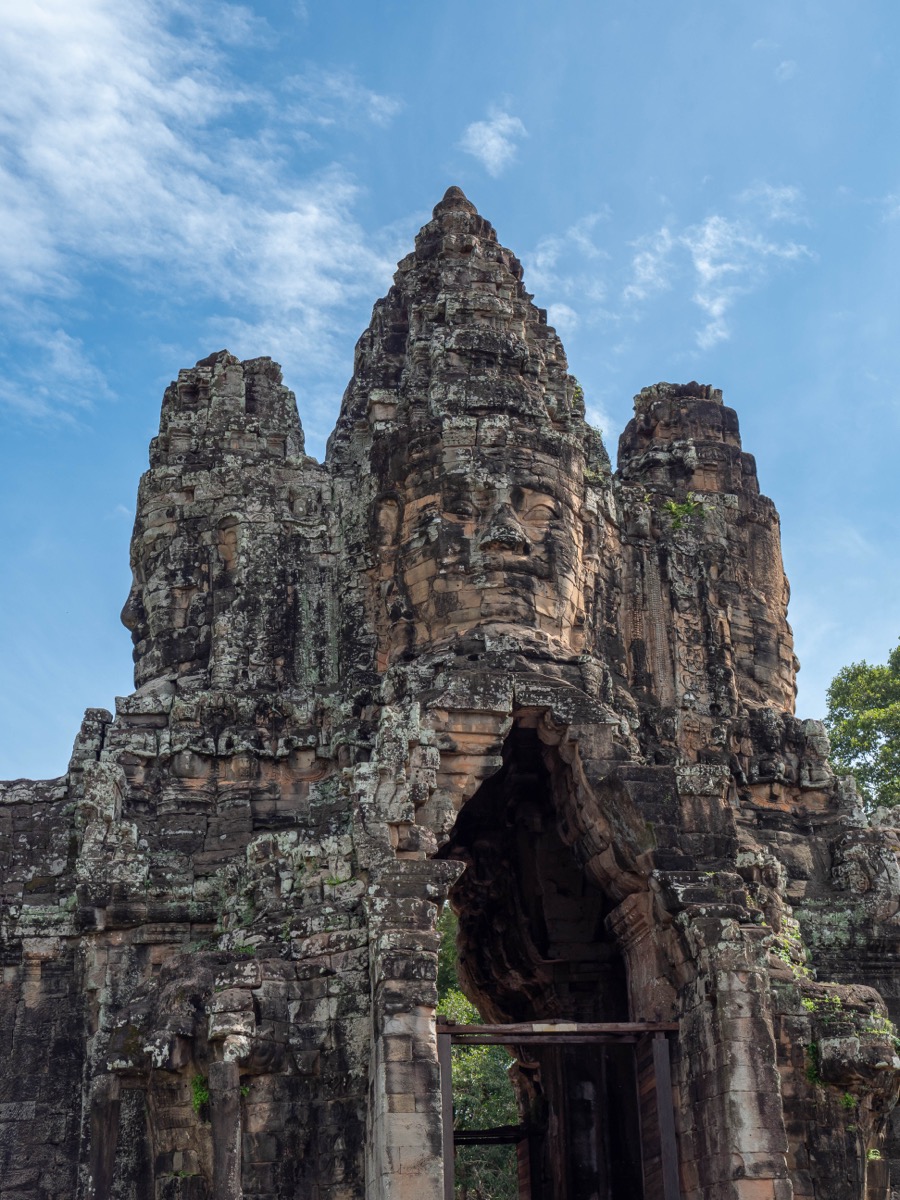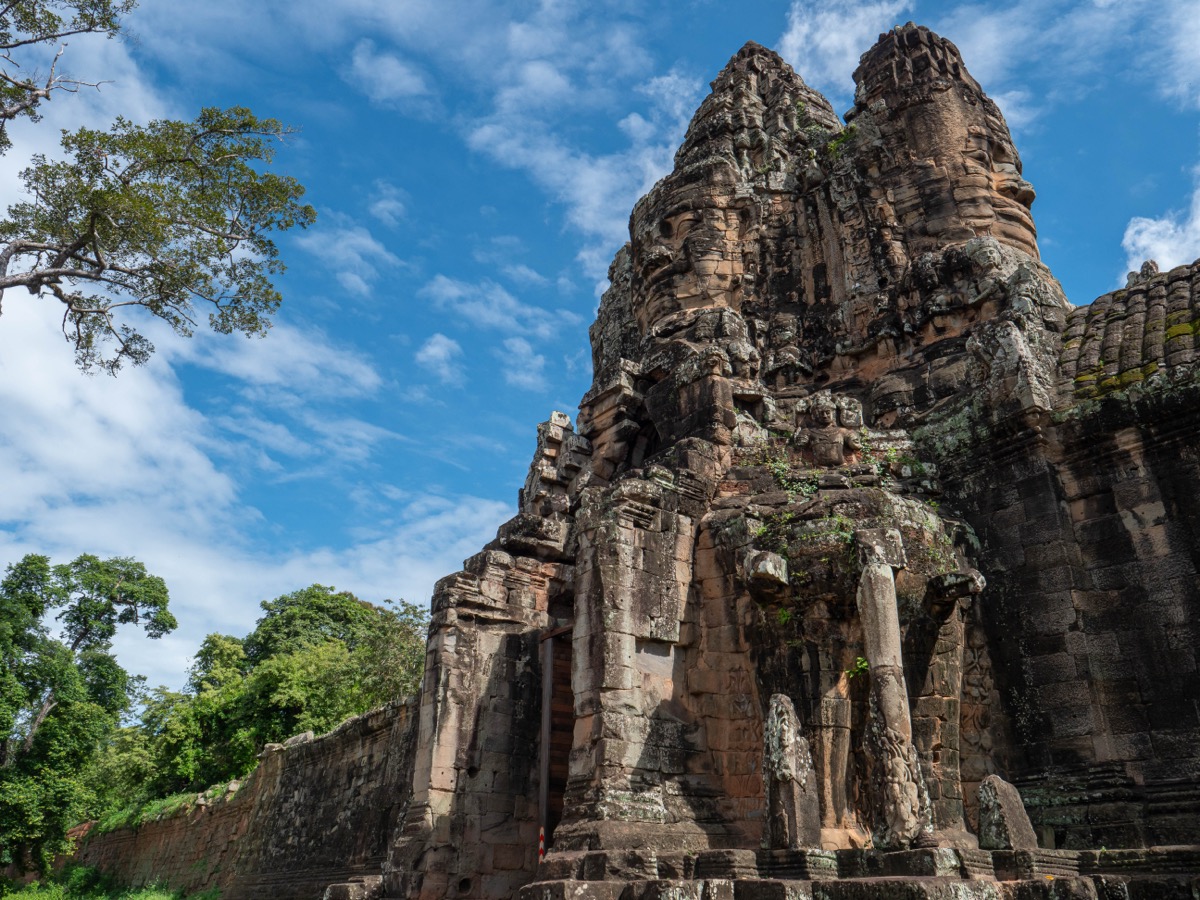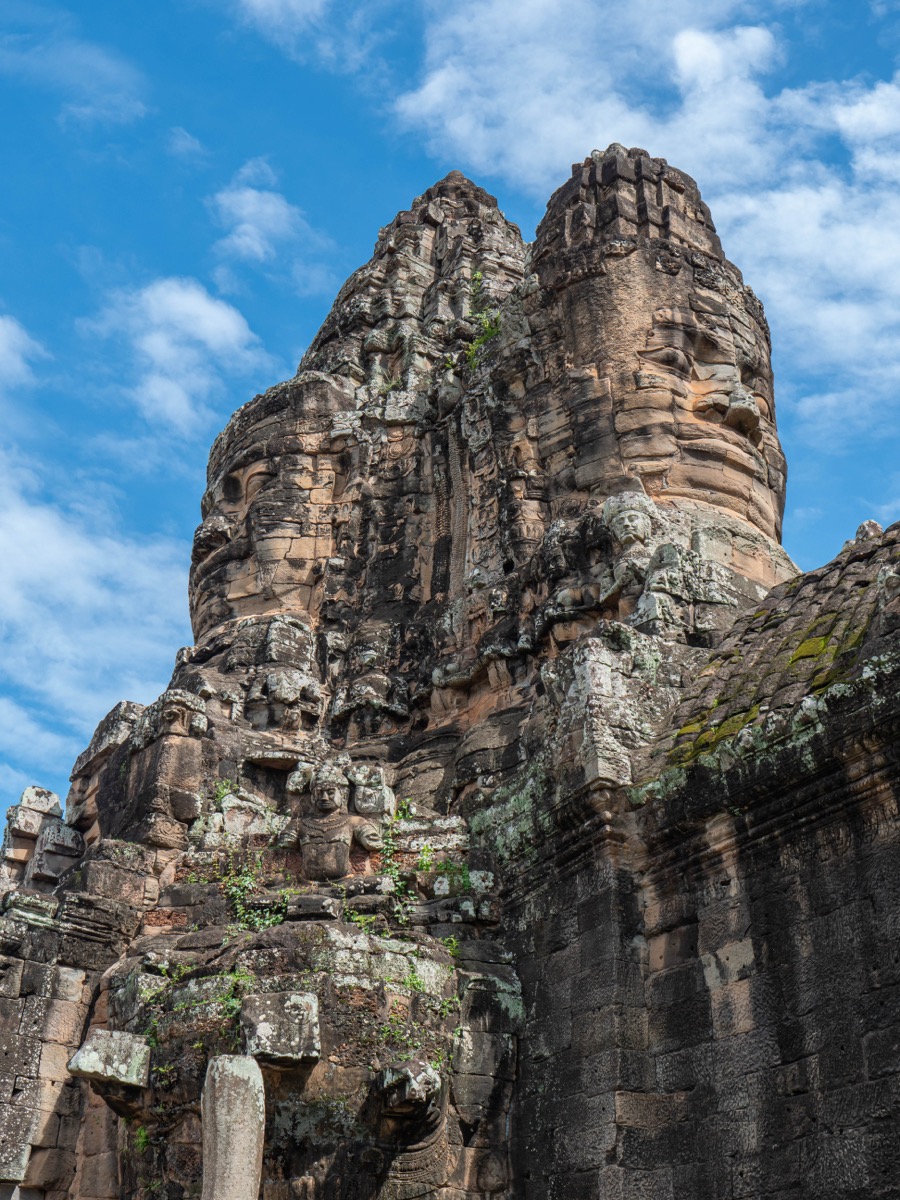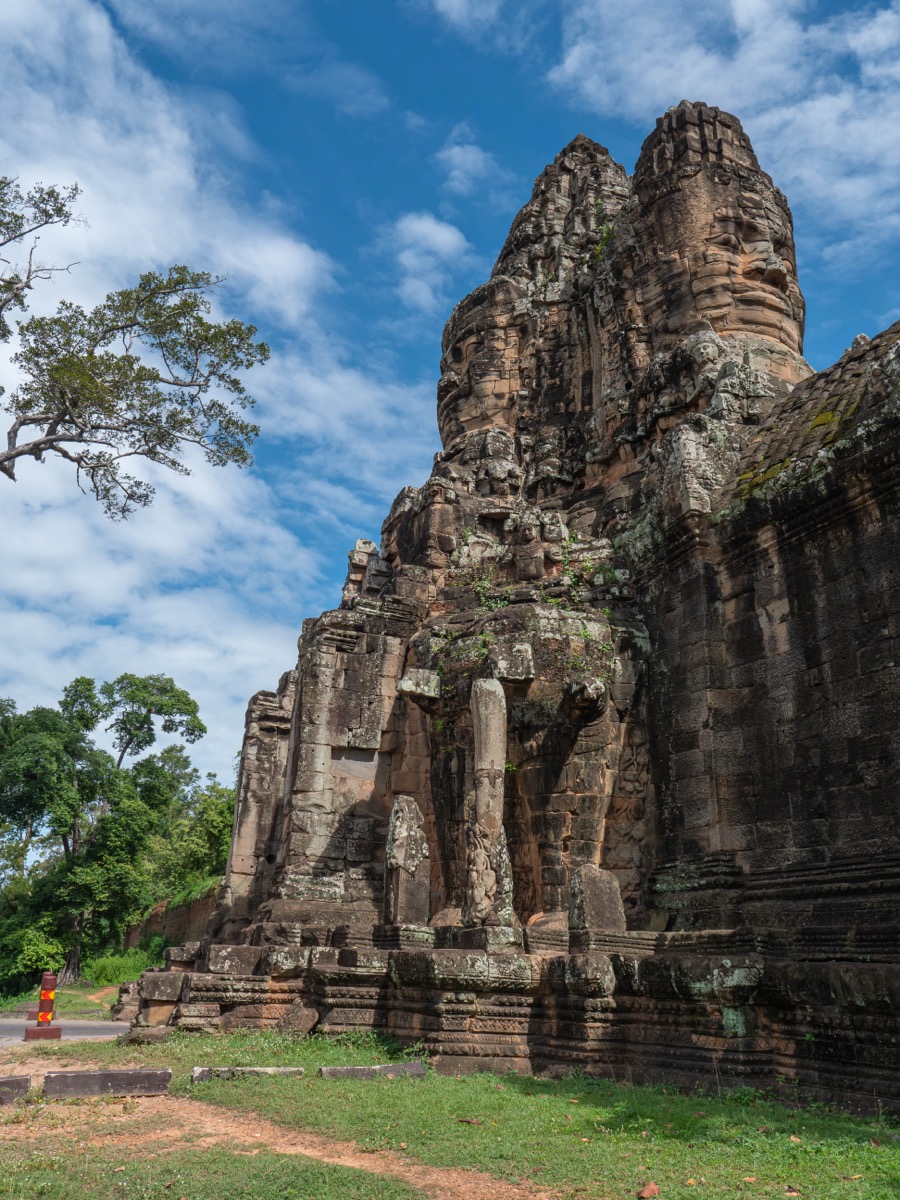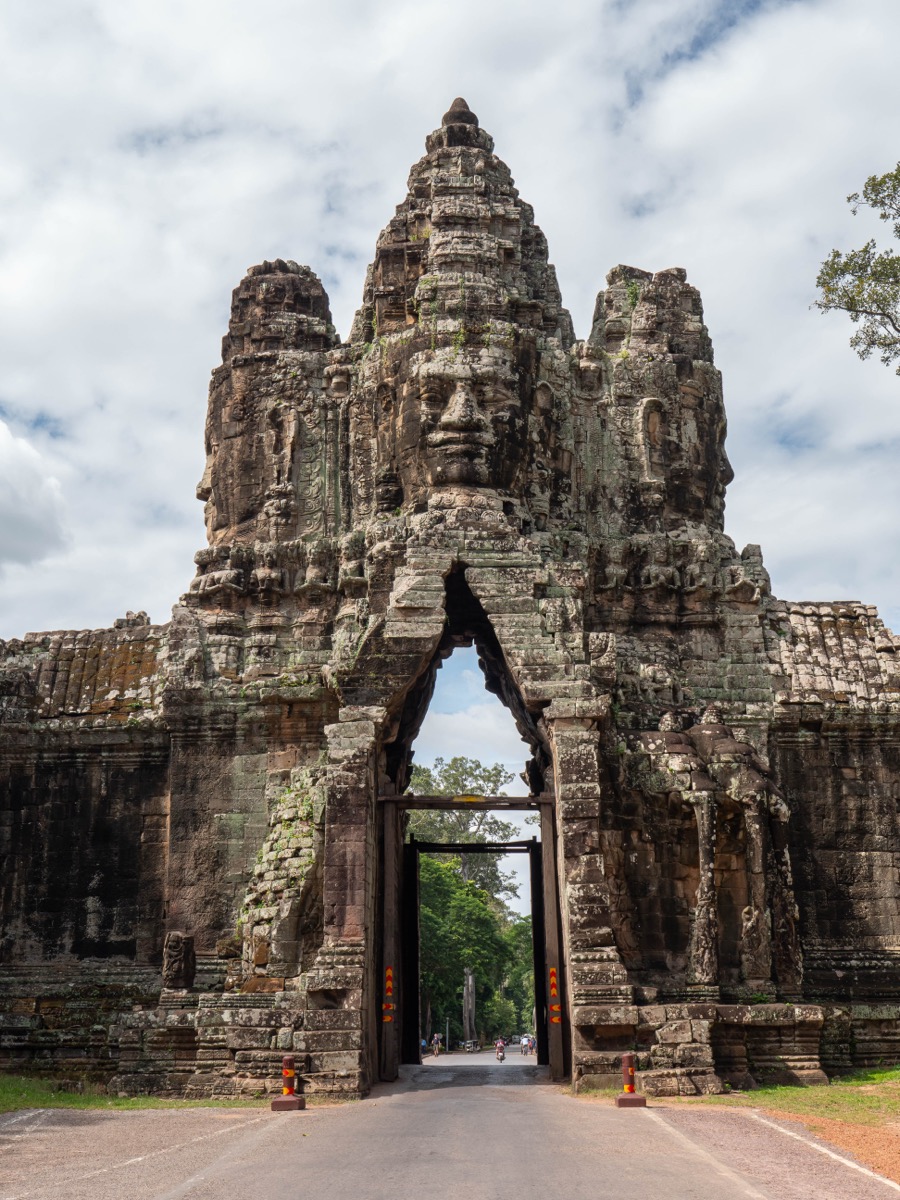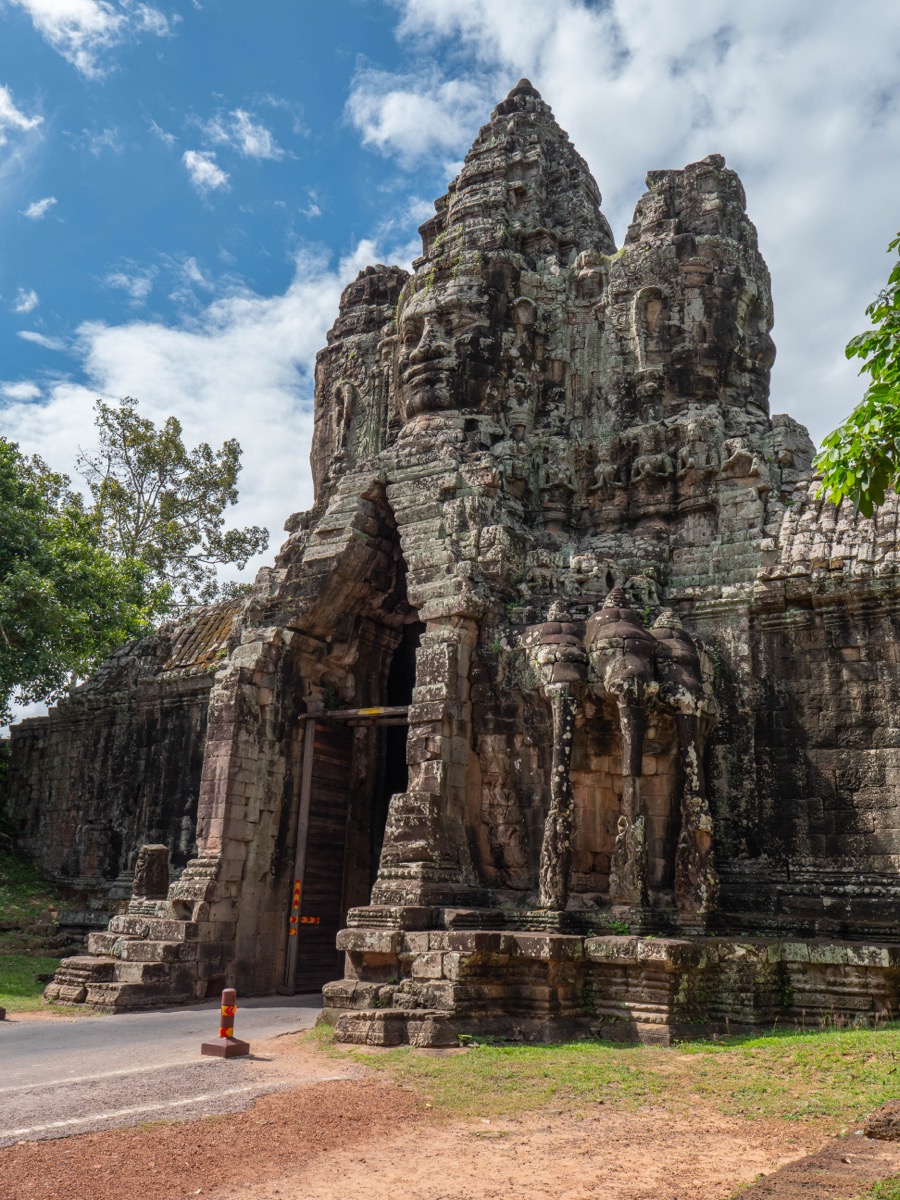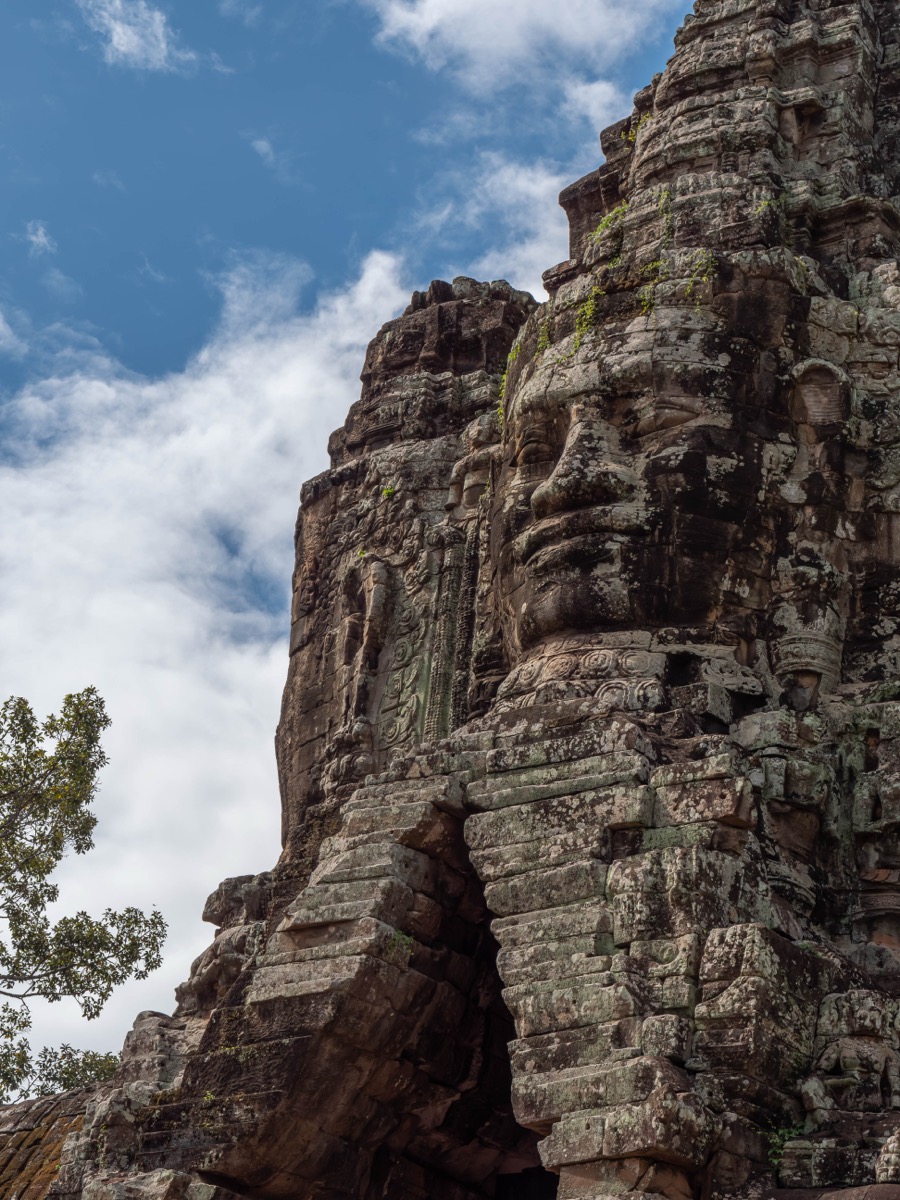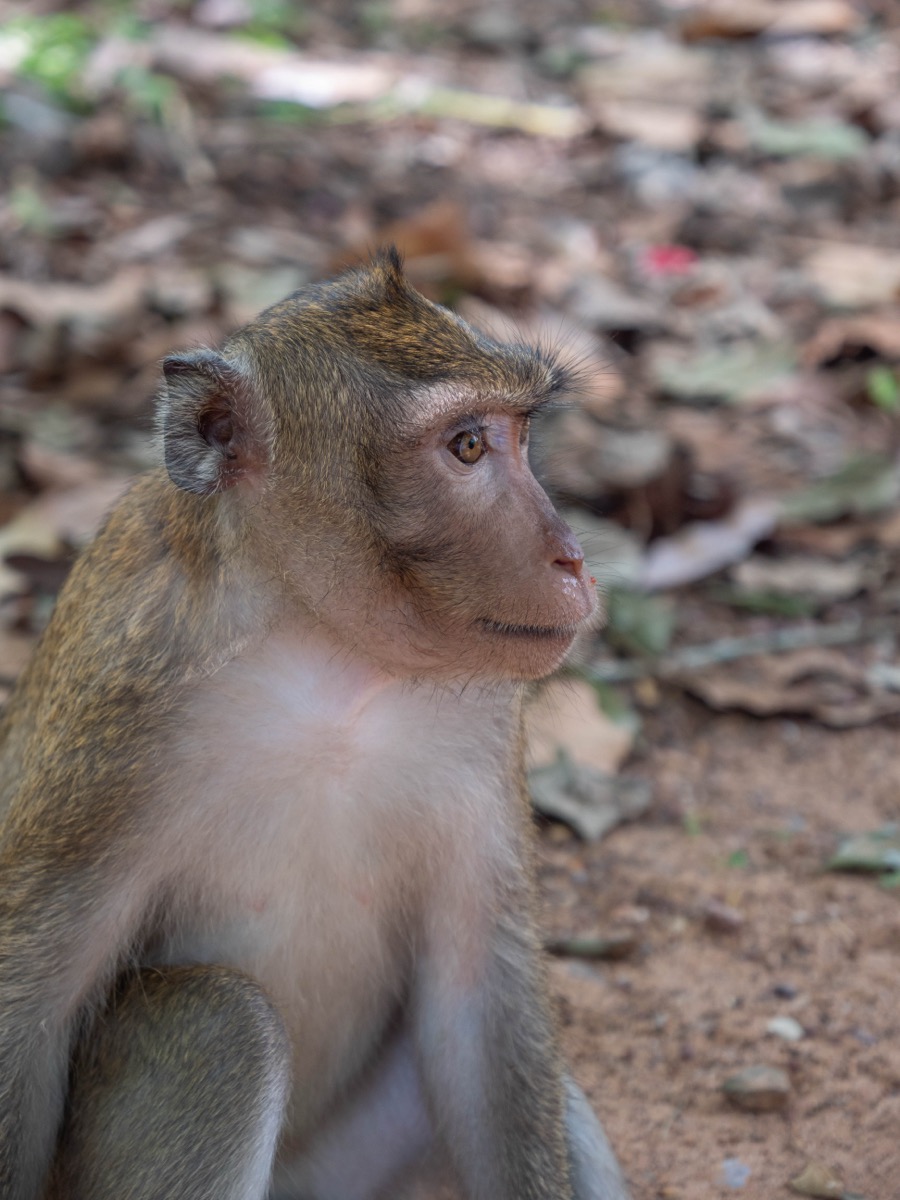The South Gate of Angkor Thom
The South Gate of Angkor Thom is an iconic entrance to the ancient city of Angkor Thom, located in Cambodia. It is one of the five main gates leading into the fortified enclosure of the royal city.
Built in the 12th century under the reign of King Jayavarman VII, the South Gate is a monumental structure richly adorned. It is made of finely carved stone and decorated with sculptures representing Hindu deities and mythological figures, including the Devas and Asuras.
The Main Entrance to Angkor Thom
The South Gate of Angkor Thom is the best-known of the five gates that provided access to the imperial capital founded by Jayavarman VII in the late 12th century. It stands on the central north-south axis connecting Angkor Vat to the Bayon, across a stone bridge adorned with monumental sculptures.
Monumental Architecture
Like the other gates of Angkor Thom, this one rises to a height of about 23 meters. It is made of sandstone and features:
- A tower topped with four faces oriented toward the cardinal directions, representing Lokeshvara, the bodhisattva of compassion, or perhaps the deified king himself.
- A vaulted opening allowing passage of chariots or elephants.
- Three-headed elephants (Airavata) carved into the lower corners, ridden by deities.
The Bridge of Gods and Demons
Access to the South Gate is via a long bridge lined with 54 statues, representing a famous scene from the Churning of the Ocean of Milk:
- On the left: Devas (gods), pulling the head of the naga.
- On the right: Asuras (demons), pulling the tail of the naga.
- The multi-headed naga (mythical serpent) serves as the sacred rope.
This allegory of cosmic balance highlights the connection between religion and power in Khmer thought.
Function and Symbolism
The South Gate was the main entrance for official visitors, merchants, and pilgrims entering the capital.
Its symbolism is twofold:
- It marks the transition between the profane world and the sacred universe of Angkor Thom.
- It affirms the divine power of the king, guarantor of cosmic order.
A Striking Experience
Today, the South Gate is one of the most photogenic spots in Angkor. In the morning or late afternoon, the soft light enhances the reliefs of the faces and the surrounding tree roots.
Visitors can:
- Walk or bike through the gate.
- Observe the partially restored statues, some original, others reconstructed.
- Appreciate the subtle integration of the gate into its natural environment.
Conclusion
The South Gate of Angkor Thom is a perfect synthesis of architectural power, religious symbolism, and political function. It welcomes the traveler not only into an ancient city but into a worldview shaped by the Khmer civilization at its height.
